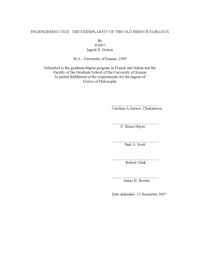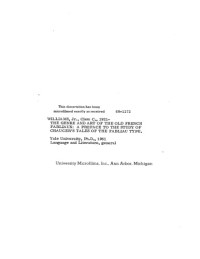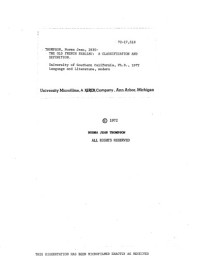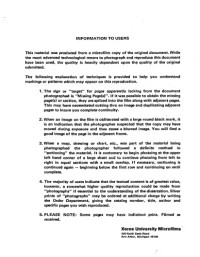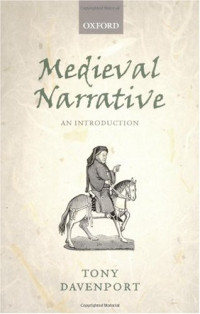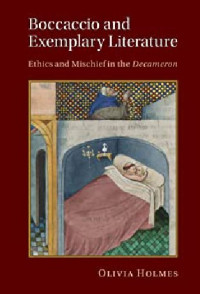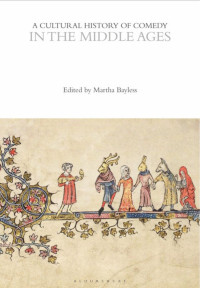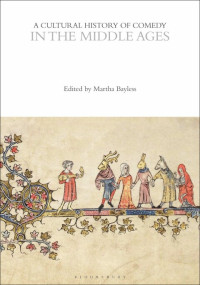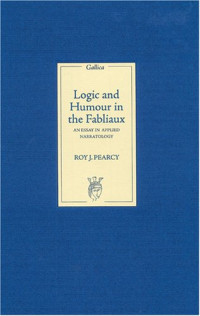
From the Fabliaux to the Decameron: Codicology and Generic Transformation
Katherine Adams Brown
As many critics have observed, modern theories of genre do not adequately represent medieval literature, yet it is still necessary for literary scholars of the Middle Ages to classify texts. The Old French fabliaux pose a particular problem of categorization because of their heterogeneity. While this diversity is a characteristic of the genre, it does not facilitate the definition of a corpus of texts called fabliaux, let alone contribute substantially to an understanding of those texts. In order to understand the fabliaux and the intergeneric relations of medieval literature, I study the fabliaux synchronically and diachronically within their codicological contexts as well as in relation to vernacular analogues in Boccaccio’s Decameron.
The innerworkings of the fabliaux are examined in La Grue. The rhetorico-poetic figures adnominatio and chiasmus demonstrate the fabliaux’s relation to romance narrative and show how these figures highlight the fabliaux’s inversion and word-play: two characteristics of the genre. The codicological contexts of La Grue suggest that the manuscript anthologies in which fabliaux are preserved present coherent systems of organization. From this, I move to a study of a single manuscript, BNF fr. 2173, specifically contrasting chiasmus in the fabliaux with its use in fables to demonstrate how in the fabliaux it undermines the narrative structure. Despite these differences, the fabliaux still contribute to the overall aesthetic principles of this codex.
The codices introduce the Decameron in which Boccaccio brings together various materials under a narrative framework. His combinations of different sources are reflected in the cornice, the organization of the days, and the individual novelle. While Eastern source material contributes primarily to the cornice, the tradition of the fabliaux codices has an analogous function in relation to the organization of the days and novelle. Boccaccio’s novelle retain the inversion and chiastic structure of the fabliaux, while serving to legitimize the author’s fiction. Reciprocally, the narrative levels and aesthetic aims of the Decameron inform the levels of narration and structural undermining inherent in the fabliaux. The inversion and chiastic structure of these types of narratives lend themselves to rewriting because they are self-reflective devices.
The innerworkings of the fabliaux are examined in La Grue. The rhetorico-poetic figures adnominatio and chiasmus demonstrate the fabliaux’s relation to romance narrative and show how these figures highlight the fabliaux’s inversion and word-play: two characteristics of the genre. The codicological contexts of La Grue suggest that the manuscript anthologies in which fabliaux are preserved present coherent systems of organization. From this, I move to a study of a single manuscript, BNF fr. 2173, specifically contrasting chiasmus in the fabliaux with its use in fables to demonstrate how in the fabliaux it undermines the narrative structure. Despite these differences, the fabliaux still contribute to the overall aesthetic principles of this codex.
The codices introduce the Decameron in which Boccaccio brings together various materials under a narrative framework. His combinations of different sources are reflected in the cornice, the organization of the days, and the individual novelle. While Eastern source material contributes primarily to the cornice, the tradition of the fabliaux codices has an analogous function in relation to the organization of the days and novelle. Boccaccio’s novelle retain the inversion and chiastic structure of the fabliaux, while serving to legitimize the author’s fiction. Reciprocally, the narrative levels and aesthetic aims of the Decameron inform the levels of narration and structural undermining inherent in the fabliaux. The inversion and chiastic structure of these types of narratives lend themselves to rewriting because they are self-reflective devices.
카테고리:
년:
2007
출판사:
Princeton University
언어:
english
페이지:
247
파일:
PDF, 1.85 MB
IPFS:
,
english, 2007
 Amazon
Amazon  Barnes & Noble
Barnes & Noble  Bookshop.org
Bookshop.org  파일을 변환하실 수 있습니다
파일을 변환하실 수 있습니다  더 많은 검색 결과
더 많은 검색 결과 기타 혜택
기타 혜택 